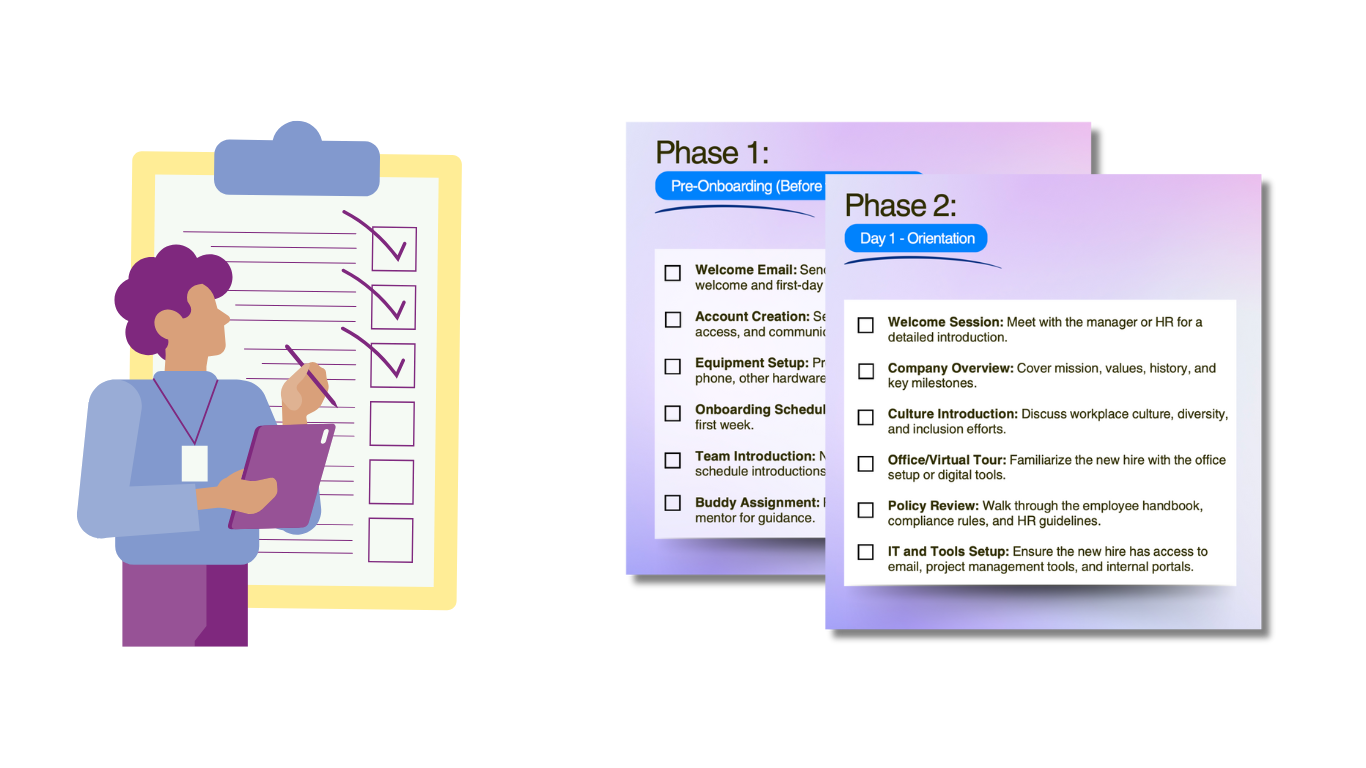Comprehensive Skill Gap Analysis Checklist for Enhanced Employee Performance
In today's fast-paced business landscape, understanding skills gaps within your workforce is essential for maintaining a competitive edge. A skills gap analysis template provides a structured approach to identifying skill deficiencies, helping businesses align employee training strategies with business objectives. This process ensures that employees possess the key skills necessary to meet future demands, drive business performance, and adapt to technological advancements.
By leveraging a well-designed skills gap analysis template, companies can bridge skills gaps, enhance career development roadmaps, and implement strategic workforce planning. Whether you're focusing on training initiatives, recruitment efforts, or succession planning, this tool plays a critical role in workforce development and talent management.

Get the checklist!
Understanding the Skills Gap Analysis Process
A skills gap analysis evaluates the difference between current skills and essential skills required for optimal performance. Conducting a skills gap analysis process helps organisations assess employee competencies, pinpoint critical skill shortages, and create action plans to address gaps efficiently.
What Is a Skills Gap Analysis?
A skills gap analysis is a structured assessment that examines current employee competencies against the skills needed to achieve business goals. This can be done through competency assessments, skill mapping, one-on-one interviews, and performance evaluations.
Why Is a Skills Gap Analysis Important?
A well-executed employee skills gap analysis offers multiple benefits, including:
- Enhancing productivity: Addressing skill deficiencies through targeted training strategies improves business outcomes.
- Aligning training with business strategy: Ensuring that training programs support strategic objectives leads to better resource allocation.
- Supporting recruitment strategies: Understanding skill gaps helps in refining recruitment efforts to attract professionals with specialized skills.
- Facilitating succession planning: Identifying critical skills enables businesses to develop future leaders and maintain a strong talent pipeline.
- Encouraging continuous learning: Regular skills gap analysis fosters an adaptability culture, ensuring employees stay ahead of industry trends.
By integrating these practices, businesses can create a culture of continuous learning and hands-on training, leading to improved organizational performance.
Components of a Skills Gap Analysis Template
A skills gap analysis template consists of several key elements designed to streamline workforce development.
Key Elements to Include
- Current Skills Inventory – A database of current skill levels among employees, forming a benchmark for identifying gaps.
- Required Skills List – A detailed list of key skills needed for specific job roles or business units.
- Gap Identification – A clear comparison between current employees’ skills and those required to achieve business priorities.
- Action Plan – A strategy outlining development programs, training resources, and job redesign options.
- Implementation Timeline – A structured ongoing process with real-time skills data tracking improvements.
- Evaluation Criteria – Measurable key performance indicators (KPIs) to assess the success of training initiatives and development programs.
Customizing Your Skills Gap Analysis Template
To maximize effectiveness, tailor your skills gap analysis template based on:
- Business size and industry needs: Addressing business demand and industry trends ensures relevance.
- Employee feedback: Incorporating input from team leaders, department heads, and junior staff improves engagement.
- Use of automation tools: Leveraging advanced technologies like automation expertise or Cloud computing training enhances efficiency.
- Review frequency: Conducting an annual skills gap analysis ensures adaptability to future skills requirements.
A customized skills gap analysis template helps businesses bridge skills gaps while maintaining an effective employee training strategy.
How to Conduct an Effective Skills Gap Analysis
Executing a successful skills gap analysis involves the following 8-step guide:
- Define Objectives – Set strategic workforce planning goals aligned with business operations.
- Identify Required Skills – Determine essential skills for key roles, considering future challenges.
- Assess Current Skills – Conduct skill assessments through self-evaluations, peer reviews, or online courses.
- Analyze Gaps – Compare actual skill levels with expected proficiency levels to identify areas needing improvement.
- Prioritize Skill Deficiencies – Focus on critical skill shortages that impact business performance.
- Develop Training Strategies – Implement hands-on training, external courses, and experiential learning.
- Implement Solutions – Roll out training programs and recruitment strategies to address gaps.
- Evaluate Progress – Use assessment tools and key performance indicators to measure effectiveness.
Tools and Resources for Implementation
To conduct a skills gap analysis, leverage the following resources:
- Training providers – Partner with business analysts, educators, and experts for effective development programs.
- Assessment tools – Use platforms like all-in-one productivity tools for tracking skills challenges.
- Recruitment of AI – Integrate AI-driven recruitment efforts for better talent management.
- Cloud computing training – Provide access to cutting-edge technologies for technical upskilling.
By implementing these training resources, businesses can enhance organizational goals while addressing gap in proficiency at both the individual level and organizational level.
Benefits of Using a Skills Gap Analysis Template
A skills gap analysis template offers several advantages, including:
- Identifying performance gaps – Recognizing specific skills scale issues that affect business strategy shifts.
- Supporting strategic initiatives – Aligning business strategy with long-term workforce development.
- Boosting employee engagement – Encouraging staff to take part in ongoing activities for career growth.
- Facilitating talent management – Enabling better succession planning through strategic workforce planning.
- Driving organizational performance – Improving overall business landscape by addressing skills shortages.
A structured skills gap analysis process enhances both business areas and individual employees, ensuring future goals align with business outcomes.
Conclusion
Addressing skills gaps is crucial for businesses across industries to stay competitive. By utilizing a skills gap analysis template, companies can effectively bridge skills gaps, align training materials with business goals, and prepare employees for future skills needs.
Regular skills gap analysis benefits include increased product quality, enhanced leader human capital, and streamlined training strategies. A proactive approach ensures that businesses stay ahead of industry trends, meet broader business objectives, and maintain a highly skilled workforce.
Invest in advanced training programs, refine recruitment efforts, and embrace continuous learning to unlock your team’s full potential today!